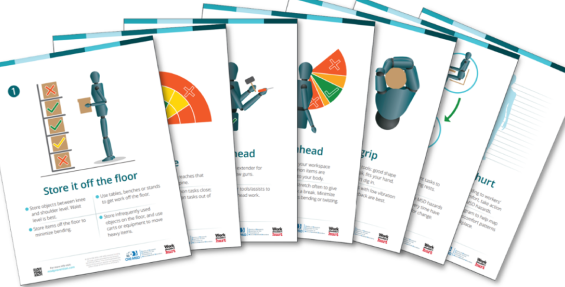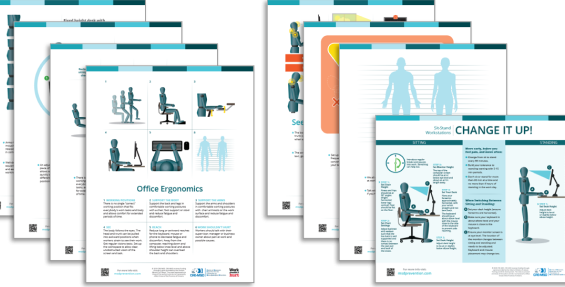
MSD Hazards in the Workplace
Well designed work considers how job demands might impact workers’ health and safety. Safe and healthy work allows workers to interact with their work environment without harm.
There is strong evidence that physical factors in the workplace greatly increase a person’s chance of developing an MSD and make worse an existing MSD on return to work. Awareness of common MSD hazards can help all stakeholders identify workplace factors that can contribute to MSD. When initial signs of discomfort or pain go unaddressed, this can lead to the development of MSD and may impact the ability to perform and enjoy tasks or leisure activities outside of work.
Fortunately, most workplace hazards that give rise to MSDs can be identified and eliminated with an effective MSD prevention program in place.

Understanding MSD
Musculoskeletal Disorders (or MSD) at work is an umbrella term for a number of different kinds of injuries and disorders of the muscles, tendons, ligaments, bone and nerves. Many body areas can be affected. The low back is the most commonly frequently affected, followed by the shoulders, neck, elbow, hands and wrists.
Common physical hazards that can lead to MSD include:
- High forces
- Awkward postures
- High repetition
These hazards can be found on their own, or in combination with each other. Other hazards that can lead to MSD include vibration, local contact stress, and temperature (cold).

Rights and Responsibilities
The responsibilities of small business owner are the same as for any other sized organization. In Ontario, “The employer, typically represented by senior management, has the greatest responsibilities with respect to health and safety in the workplace and is responsible for taking every precaution reasonable in the circumstances for the protection of a worker.
The employer is responsible for ensuring that the [Internal Responsibility System] IRS is established, promoted, and that it functions successfully. A strong IRS is an important element of a strong health and safety culture in a workplace. A strong health and safety culture shows respect for the people in the workplace.”
Relevant Guideline Information
The Quick Start Guide posters describe common MSD hazards foudn in the workplace. There are two different versions; General and Office. The General Guideline is intended for any type of workplace, and the Office Guideline is intended for computer-based work.

Quick Start Guide: General
The guide includes a folder and posters with information on common MSD hazards and solutions to control hazards in many workplaces.

Quick Start Guide: Office
The guide includes a folder and posters that include tips for setting up computer-based workstations and best practices for MSD prevention.
Relevant Resources
Additional Resources for Small Business Owners
View a curated collection of resources in the resource library.

Want to search the resource library?
Find all the available resources on the MSD prevention website, including posters, videos, and links to relevant websites.


